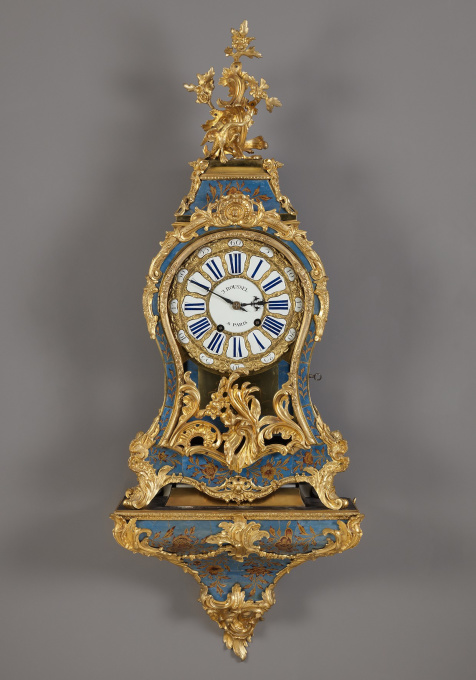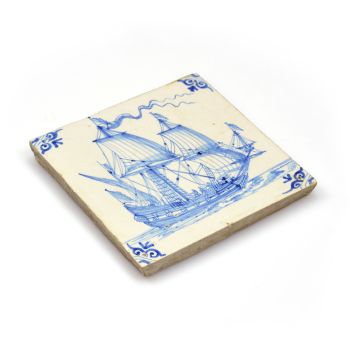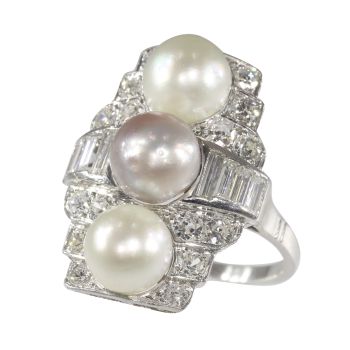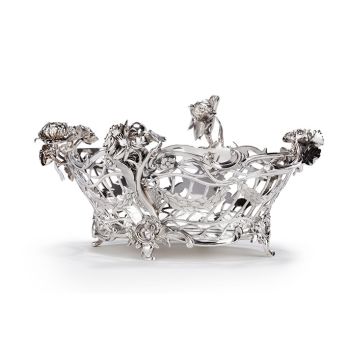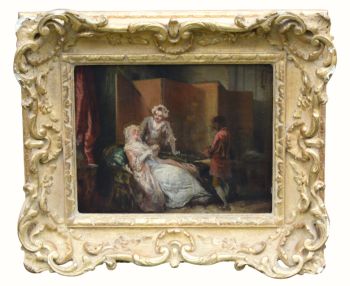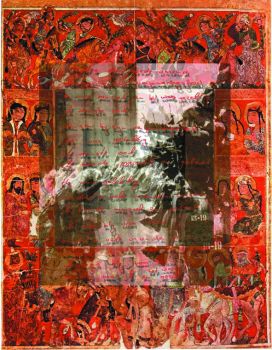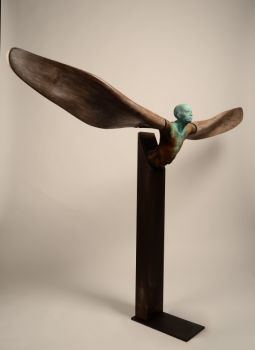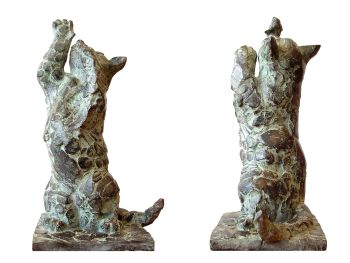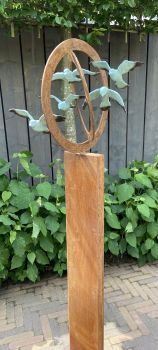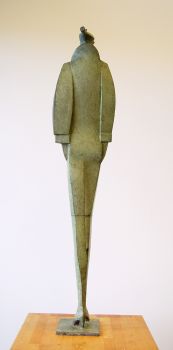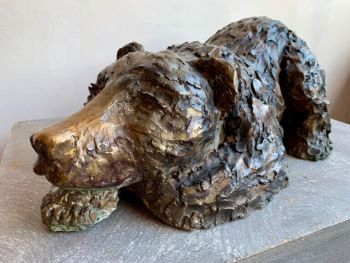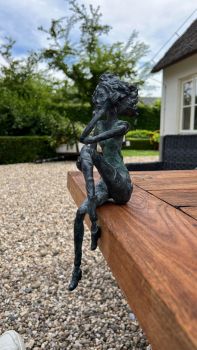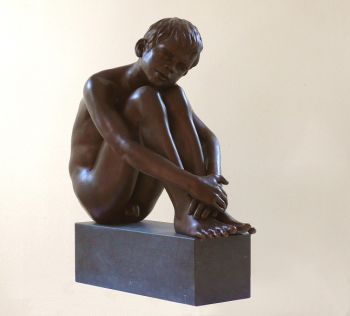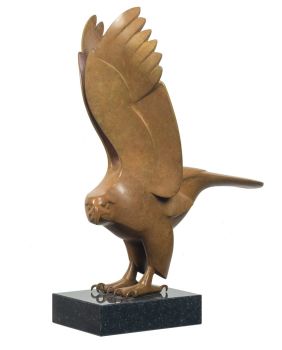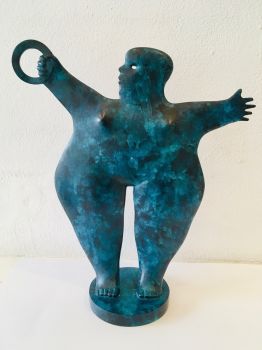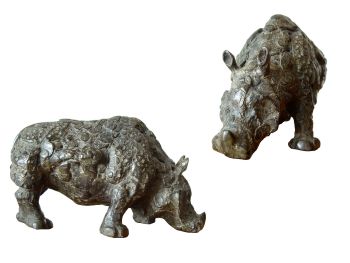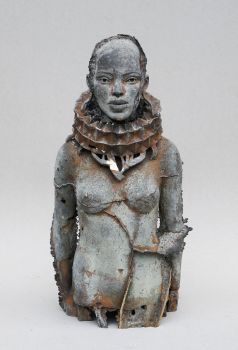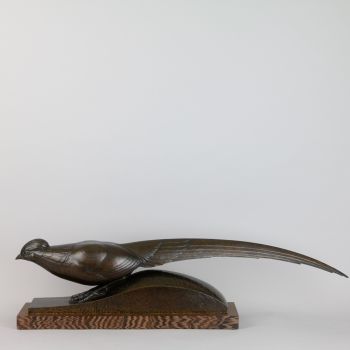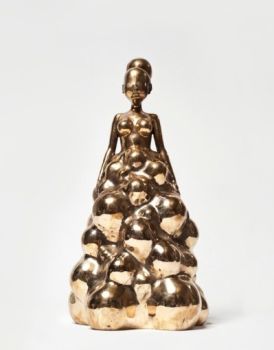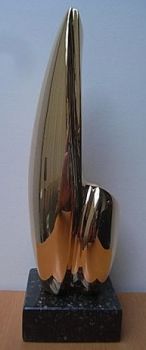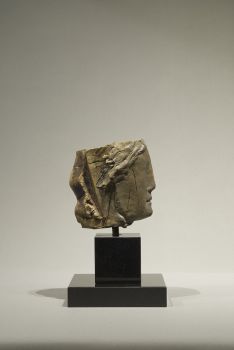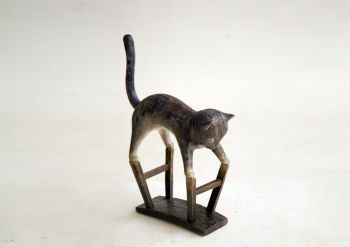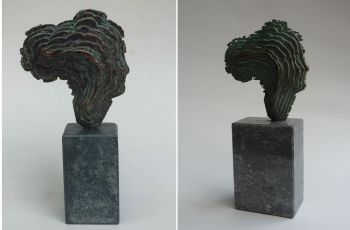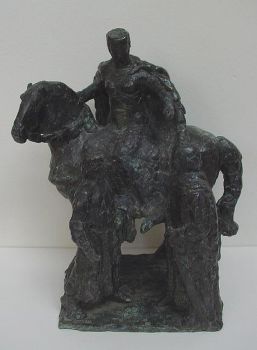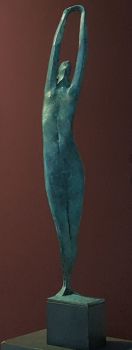Important Ormolu-mounted Cartel Clock with Bracket 1744 - 1746
Artista Desconocido
BronceOroMetalDorado
133 ⨯ 51 ⨯ 24 cm
Actualmente no disponible a través de Gallerease
- Sobre la obra de arteThe movement of ca. twenty-one day duration, with verge escapement. Striking on the hours and half hours. The chapter ring with twenty-five cartouches, the hands of blued steel.
The waisted and domed clock case of “corne bleue” is painted with flower sprigs and foliage in gold and red.
The chased ormolu mounts on the bracket show an asymmetric ornament with C-volutes, acanthus foliage and flower garlands.
The front of the clock is mounted in an ormolu band with at the top a rosette within foam-edges and foliate scrolls. The glass sides show beaded edges.
The lower part of the glass door is decorated with an asymmetrical ornament with acanthus scrolls, flowers and foam-edges.
The dome is mounted with entwined serpents and is crowned by a high finial with acanthus- and foam-edged volutes and with flower sprigs behind a swan.
The great quality of the chased mounts and the beautifully executed gold coloured flower sprigs, together with the striking colour of the corne bleue enhance the lines of both clock and bracket in an exceptional way.
Signed on the white enamel dial: J. Roussel a Paris. (Jean-Michel Roussel: 1712-1766). - Sobre el artista
Puede suceder que un artista o creador sea desconocido.
Algunas obras no deben determinarse por quién está hecho o por (un grupo de) artesanos. Algunos ejemplos son estatuas de la Antigüedad, muebles, espejos o firmas que no son claras o legibles, pero también algunas obras no están firmadas en absoluto.
También puedes encontrar la siguiente descripción:
•"Atribuido a …." En su opinión, probablemente una obra del artista, al menos en parte.
•“Estudio de….” o “Taller de” En su opinión, una obra ejecutada en el estudio o taller del artista, posiblemente bajo su supervisión
•“Círculo de…” En su opinión, una obra del período del artista que muestra su influencia, estrechamente asociado con el artista pero no necesariamente su alumno.
•"Estilo de …." o “Seguidor de…”. En su opinión, una obra ejecutada al estilo del artista pero no necesariamente por un alumno; puede ser contemporáneo o casi contemporáneo
•"Manera de …." En su opinión una obra al estilo del artista pero de fecha posterior
•"Después …." En su opinión, una copia (de cualquier fecha) de una obra del artista
•“Firmado…”, “Fechado…” o “Inscrito” En su opinión, la obra ha sido firmada/fechada/inscrita por el artista. La adición de un signo de interrogación indica un elemento de duda.
•“Con firma…”, “Con fecha…”, “Con inscripción…” o “Lleva firma/fecha/inscripción” en su opinión la firma/fecha/inscripción ha sido añadida por alguien que no es el artista
Artwork details
Related artworks
Artista Desconocido
Icono de madera ruso antiguo: Arcángel Gabrielearly 17th
Precio a consultarKunsthandel H.W.C. Dullaert Icons
Artista Desconocido
Anillo belle epoque toi et moi1900
Precio a consultarAns Hemke-Kuilboer Juwelier & Antiquair
Artista Desconocido
Holandeses en miniatura (Netsuke)1700 - 1900
Precio a consultarZebregs & Röell - Fine Art - Antiques
1 - 4 / 12- 1 - 4 / 17
Artista Desconocido
UNA COLECCIÓN DE CUATRO CAJAS BÍBLICAS DE MARFIL DE SRI LANKAN18th century
Precio a consultarZebregs & Röell - Fine Art - Antiques
Artista Desconocido
UN NETSUKE MARINE MARFIL DE UN HOLANDÉS CON UN VENTILADOR CHINO18th century
Precio a consultarZebregs & Röell - Fine Art - Antiques
Artista Desconocido
Japanese transition-style lacquer coffer 1640 - 1650
Precio a consultarZebregs & Röell - Fine Art - Antiques
1 - 4 / 24Artista Desconocido
Cáliz veneciano alado1624 - 1626
Precio a consultarPeter Korf de Gidts - Antiquairs
Gyrinus
Vidrio grabado punteado con putti1764 - 1766
Precio a consultarPeter Korf de Gidts - Antiquairs
1 - 4 / 24- 1 - 4 / 24

